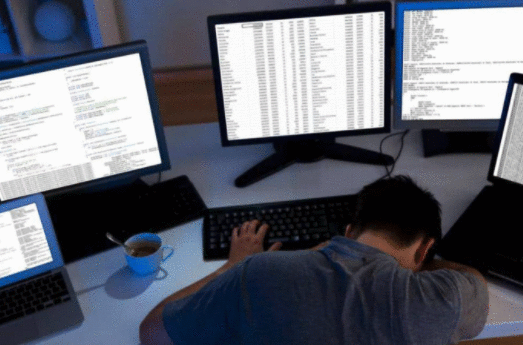OpenCV具有copyTo功能,可以将遮罩区域从一个Mat复制到另一个Mat.
http://docs.opencv.org/3.1.0/d3/d63/classcv_1_1Mat.html#a4331fa88593a9a9c14c0998574695ebb
Python绑定中的等价物是什么?我想用二进制掩码将图像区域复制到另一个图像.
cv::Mat::copyTo根据输出矩阵是否已初始化,做两件事之一.如果未初始化输出矩阵,则使用copyTo掩码会创建一个与输入类型相同的新输出矩阵,并且所有值都将在所有通道上设置为0.一旦发生这种情况,掩模定义的图像数据将被复制,矩阵的其余部分将被设置为0.如果输出矩阵已初始化且已由内容组成,则copyTo复制掩码中定义的像素.源和保留不是掩码的一部分的像素在目的地中保持完整.因此,从源图像中替换由掩模定义的像素将被复制到输出.
因为OpenCV现在用于numpy与库接口,所以很容易做到这两种方法.为了区别于本文中看到的另一个答案,第一种方法可以通过简单地将蒙版与图像以元素方式相乘来实现.假设您的输入被调用img并且mask我假设掩码为2D的地方调用了二进制掩码,只需执行以下操作:
import numpy as np import cv2 mask = ... # define mask here img = cv2.imread(...) # Define input image here # Create new image new_image = img * (mask.astype(img.dtype))
上面的代码虽然假定两个img和mask共享相同数量的信道.如果您使用彩色图像作为源和我已经假设的掩模2D,那将变得棘手.因此,通道总数为2而不是3,因此上述语法会给您一个错误,因为两者之间的尺寸不再兼容.使用彩色图像时,您需要适应这一点.您可以通过向蒙版添加单个第三维来执行此操作,以便可以利用广播.
import numpy as np
import cv2
mask = ... # define mask here
img = cv2.imread(...) # Define input image here
# Create new image
# Case #1 - Other image is grayscale and source image is colour
if len(img.shape) == 3 and len(mask.shape) != 3:
new_image = img * (mask[:,:,None].astype(img.dtype))
# Case #2 - Both images are colour or grayscale
elif (len(img.shape) == 3 and len(mask.shape) == 3) or \
(len(img.shape) == 1 and len(mask.shape) == 1):
new_image = img * (mask.astype(img.dtype))
# Otherwise, we can't do this
else:
raise Exception("Incompatible input and mask dimensions")
对于第二种方法,我们假设我们有另一个图像调用other_image,您希望将屏幕定义的此图像中的内容复制回目标图像img.在这种情况下,您首先要做的是确定蒙版中numpy.where使用的所有非零位置,然后使用这些位置索引或切片到图像以及要从中复制的位置.我们还必须注意两个图像之间的通道数量,就像第一种方法一样:
import numpy as np
import cv2
mask = ... # define mask here
img = cv2.imread(...) # Define input image here
other_image = cv2.imread(...) # Define other image here
locs = np.where(mask != 0) # Get the non-zero mask locations
# Case #1 - Other image is grayscale and source image is colour
if len(img.shape) == 3 and len(other_image.shape) != 3:
img[locs[0], locs[1]] = other_image[locs[0], locs[1], None]
# Case #2 - Both images are colour or grayscale
elif (len(img.shape) == 3 and len(other_image.shape) == 3) or \
(len(img.shape) == 1 and len(other_image.shape) == 1):
img[locs[0], locs[1]] = other_image[locs[0], locs[1]]
# Otherwise, we can't do this
else:
raise Exception("Incompatible input and output dimensions")
这是两种方法的示例运行.我将使用Cameraman图像,这是大多数图像处理算法中看到的标准测试图像.

我还人工制作了图像颜色,即使它可视化为灰度,但强度将被复制到所有通道.我还将定义一个掩码,它只是左上角的100 x 100子区域,因此我们将创建一个仅复制此子区域的输出图像:
import numpy as np
import cv2
# Define image
img = cv2.imread("cameraman.png")
# Define mask
mask = np.zeros(img.shape, dtype=np.bool)
mask[:100, :100] = True
当您使用第一种方法时,当我们显示结果时,我们得到:

我们可以看到,我们创建了一个输出图像,其中左上角100 x 100子区域包含我们的图像数据,其余像素设置为0.这取决于设置的掩码位置True.对于第二种方法,我们将创建另一个图像,该图像是与[0, 255]所有通道的跨越输入图像相同大小的随机图像.
# Define other image other_image = (255*np.random.rand(*img.shape)).astype(np.uint8)
一旦我们用第二种方法运行代码,我现在得到这个图像:

如您所见,图像的左上角已根据设置的蒙版位置进行更新True.
 京公网安备 11010802040832号 | 京ICP备19059560号-6
京公网安备 11010802040832号 | 京ICP备19059560号-6